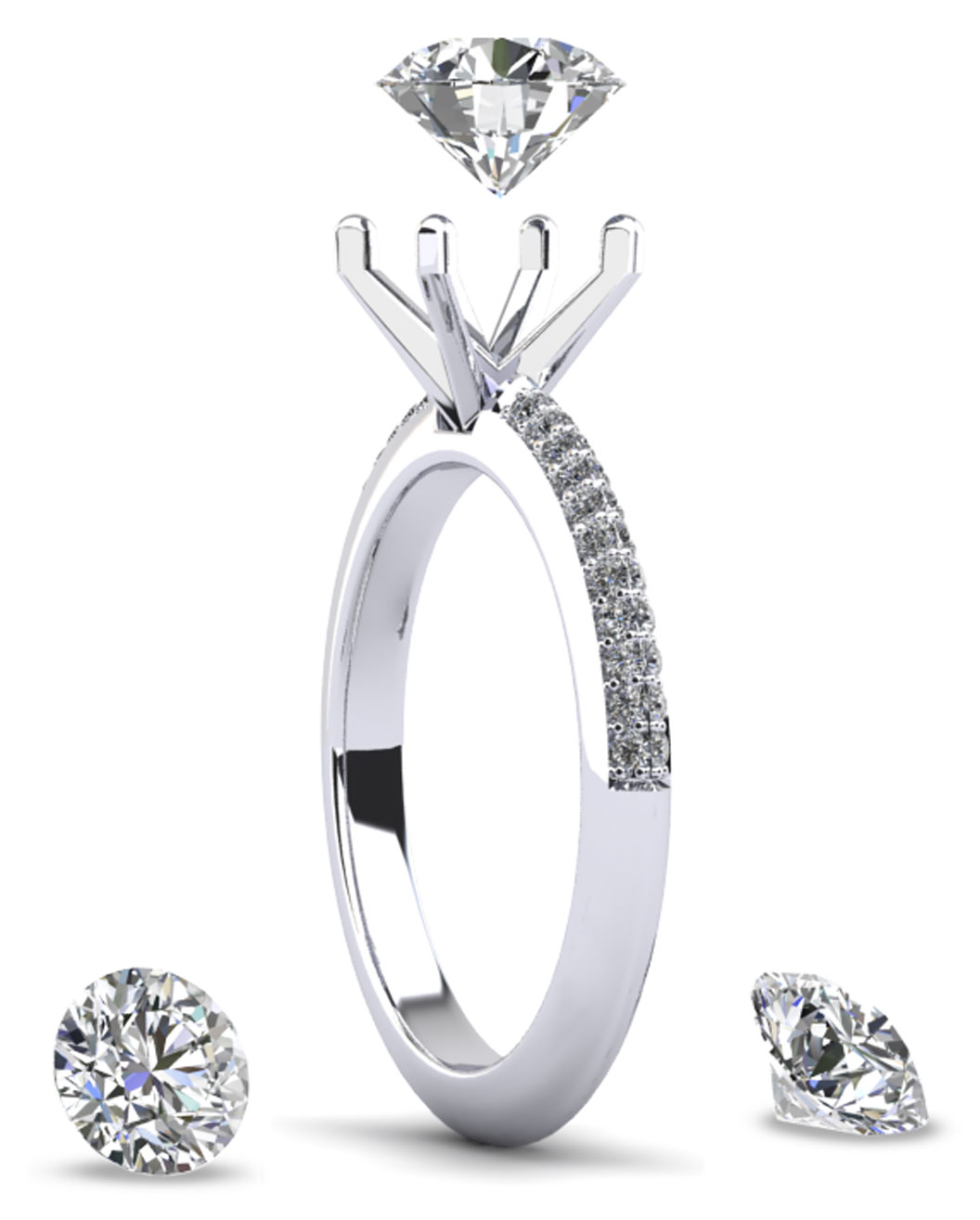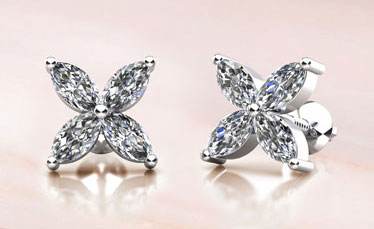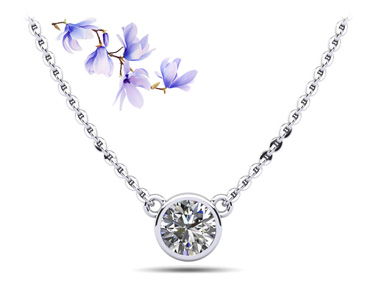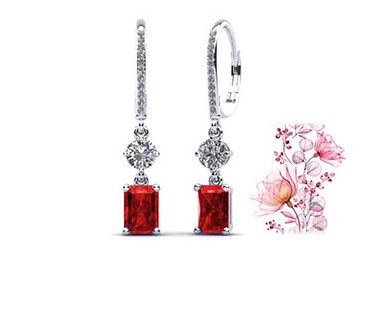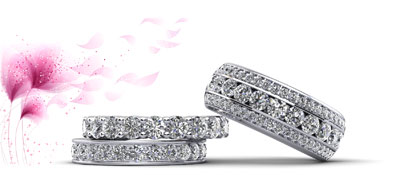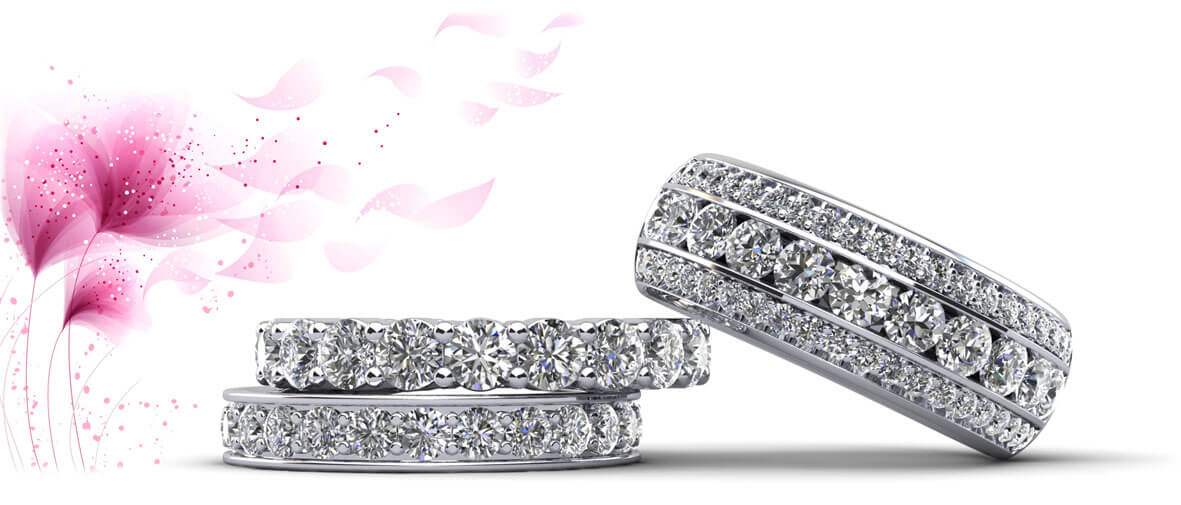Shop By Category
The Anjolee Experience
Custom orders at your fingertips, easy-to-use
visualization tools, and the comfort of the
Anjolee Guarantee so you can purchase with
confidence - discover the Anjolee Experience.
The Anjolee Guarantee
Lifetime Warranty
Authentic Genuine Diamonds & Gems
Anjolee Certificate of Authenticity
Free overnight Shipping & 30-Days Returns
Learn MoreFREQUENTLY ASKED QUESTIONS AND BUYING GUIDE
Each month of the year is assigned a gemstone, called a birthstone. The 12 birthstones are garnet (January), amethyst (February), aquamarine (March), diamond (April), emerald (May), pearl (June), ruby (July), peridot (August), sapphire (September), opal (October), topaz (November), and tanzanite (December).
It is recommended to clean your jewelry at least once a month. Most gemstone jewelry pieces can be cleaned using a small amount of mild dish detergent, warm water, and a soft-bristled brush. Using the brush, gently scrub around the stone, concentrating behind the stone where dust and dirt can accumulate. Rinse with clean water and wipe dry with a soft cloth. Certain gemstones are sensitive, like pearls – so don’t submerge in water and only clean with a soft cloth. In order to protect your jewels, avoid wearing during vigorous exercise or when working with your hands while performing strenuous activities and avoid wearing while around harsh chemicals.
Diamonds are the hardest stones, followed by ruby and sapphire. Not only are these gemstones strong in terms of hardness, but they are also extremely tough. Rubies and sapphires have an exceptional toughness rating, making these gemstones suitable for everyday wear.
Diamond and gem quality are determined by the “4 C’s” — carat, cut, clarity, and color. The weight of a gemstone or diamond is measured in carats. A gemstone’s price typically rises with its weight. A gemstone’s cut refers to its appearance after having been shaped by a craftsman. Clarity is the structural integrity of the stone. Blemishes and inclusions that are both visible and invisible to the naked eye are taken into account, although gemstones are generally assessed less harshly than diamonds in this respect. For a diamond, an inclusion of the smallest degree can significantly impact its price, while a gemstone is judged by whether it is “eye-clean” or devoid of conspicuous flaws. And color is the least important factor to a colored gemstone’s quality. A gemstone’s color grade is based off of how vibrantly colorful it is. By contrast diamonds are scrutinized for color. The highest quality diamonds are almost colorless.
The cut of a gemstone describes the shape of its face and facets after being polished and cut by a gemcutter or lapidary. A gemstone’s cut is a very important aspect of its value. A quality cut highlights a gemstone’s brilliance or brightness and scintillation or sparkle, while a poor gemstone is diminishing. Even a near-perfect gemstone can appear dull if it is cut badly.
The three basic gem cutting styles are brilliant, in which the facets are triangular, step, which is made up of rectangular facets, and mixed, a combination of the two. These cuts are graded based on quality. The best grade of cut is referred to as the ideal cut and only represents the top 3% of diamonds. Following the ideal cut grade is the excellent cut. This cut is also quite rare; only about 15% of cut diamonds and gemstones earn an excellent cut grade. Most diamonds and gemstones are shallowly or deeply cut and as a result do not reflect light very well. Anjolee exclusively carries ideal and excellent cut diamonds, ensuring every customer gets a brilliant, sparkling stone.
The hardness of a gemstone is based on its ability to withstand abrasion and erosion while the toughness of a gemstone assesses its ability to absorb shock or impact. Hard gemstones, such as diamonds, are scratch resistant but may chip or shatter when impacted upon. Tough gemstones, like rubies, are difficult to break but may scratch easily.
Gem hardness is measured by the Mohs Scale of Mineral Hardness or Mohs scale, a centuries-old grading system originated in 1812 by German minerologist Friedrich Mohs. The Mohs scale assesses the ability of one gemstone to scratch another gemstone. Gemstones can earn a rating from 1 to 10 in terms of hardness. The closer a gemstone’s rating is to 10, the harder it is. Diamonds have a hardness of 10, meaning this type of gemstone can scratch gemstones of a lower hardness. Gemstones of the same hardness rating cannot scratch each other. This is why rubies and sapphires can be stored or worn together without worry as both gemstones have a hardness of 9.
The hardest gemstone is a diamond. It has a Mohs hardness of 10, the highest possible score a gemstone can have in terms of hardness.
Generally, it is safest to bring a scratched gemstone to a professional jeweler who can buff out the scratches by polishing it. To keep gemstone jewelry safe and scratch-free, it is important to properly store all pieces. This includes categorizing jewelry by gemstone type as some stones are softer than others and therefore more prone to damage. Soft gemstones such as opal and pearls for instance, should not be stored together with hard stones like sapphires or diamonds.
![]()










